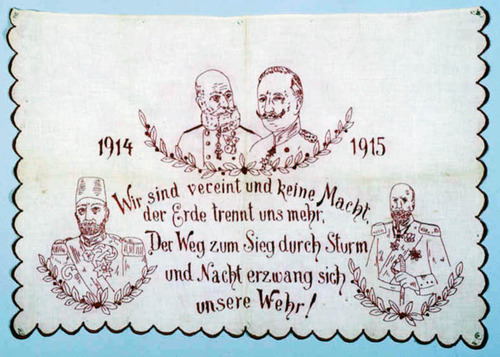Theodore Bikel Sings “Mu Asapru”
by J.D. Arden, M.L.I.S. candidate, Reference Services Research Intern, Center for Jewish History
Click here for audio.
Here is a classic Passover song which can be a fun challenge in counting backwards in Yiddish after drinking wine.
מה אספּרה, מה אדברה אותך
װער קען זאָגן, װער קען רעדן װאָס די 1 באַטײַט
איינער איז גאָט, און גאָט איז איינער, און װײַטער קיינער
The opening line of “Mu Asapru” is an Aramaic phrase that basically translates to “So what can I say, what can I tell you?”
Aramaic (which could be thought of an ancient colloquial dialect of Hebrew) was the primary spoken language of the Jewish people in the first millennium. In this song the Hebrew phonetics are in the Ashkenazi accent. So what to an Israeli today would be read as a very humorous old-fashioned “Ma asapra, ma adabra itkha?” is pronounced in this song as “mu asapru, mu adabru oyskho oyskho? yamdadadida…” The rest of the song is a speed-race in Yiddish to match numbers to Jewish terminology, one-by-one and then in reverse order.
To start, you’ll need to know Yiddish numbers one through seven:
1 איין (eyn), 2 צוויי (tsvey), 3 דרײַ (dray), 4 פֿיר (fir), 5 פֿינף (finf), 6 זעקס (zeks), 7 זיבן (zibn).
From there add in the formula: “Ver ken zogen, ver ken reden, vos di (number) batayt… (number) zeynen di …” meaning “Who can say it, who can tell it – what (one, two, etc) means? …(one, etc) are the (insert Jewish historical term here).
The trick of the song is that after each number you have to count backwards in succession to the number one in each refrain—as fast as possible. Have fun!
Here are the complete Yiddish lyrics in transliteration:
Mu asapru mu adabru oyskho oyskho, yamdadadida
Ver ken zogn, ver ken redn, vos di eyns batayt
Eyner iz Got (גאָט), un Got iz eyner, un vayter keyner. Hey!
… vos di tsvey batayt?
Tsvey zeynen di liches (לוחות), un eyner iz dokh Got, un Got is eyner, un vayter keyner. Hey!
… vos di dray batayt?
Dray zeynen di oves (אבות)… Hey!
… vos di fir batayt?
Fir zeynen di imes (אמהות)… Hey!
… vos di finef bayayt?
Finf zenen di chamushim (חומשים)… Hey!
… vos di zeks batayt?
Zeks zenen di mishnayes (משניות)… Hey!
… vos di zibn batayt?
Zibn zenen di vochenteyg (וואָכנטייג)… Hey!
My English translation:
So what can I say, what can I tell you?
Who can say, who can tell what One means…
One is God, and God is One and there is no other – Hey!
… the meaning of Two?
Two are the Tablets of the Law…
… the meaning of Three?
Three are our Patriarchs…
… the meaning of Four?
Four are the Matriarchs…
… the meaning of Five?
Five are the five books of Chumash…
… the meaning of Six?
Six are the six books of Mishna…
… the meaning of Seven?
Seven are the weekdays,
Six are the six books of Mishna,
Five are the five books of Chumash,
Four are the Matriarchs,
Three are our Patriarchs,
Two are the Tablets of the Law,
One is God, and God is One, and there is no other – Hey!
–
Want more music? The YIVO Institute for Jewish Research here at the Center has great sound archives. Click here to search for songs!

